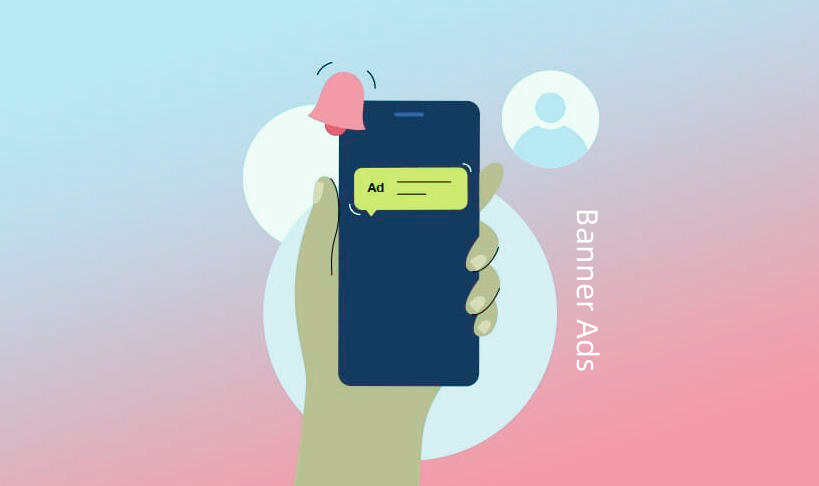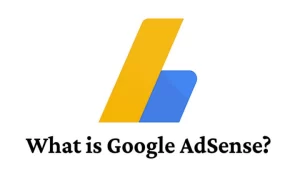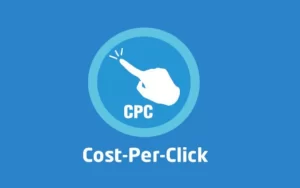Besides banner ads, other types of promotional materials have been initiated on the Web. Despite the new practices that the world has commenced in the area of marketing, banner ads are still the ace mark of the trade for both marketers and businesses. As you refer to this guide, you will learn both the theoretical side and the practical part of banner advertising, thus gradually becoming a master marketer.

What is Banner Advertising?
Banner advertising is a web page display method consisting of a rectangle graphic display. These are parts of the HTML code that are connected to a website and contain a hyperlinked object of the website visitor through advertisers. They may not be displayed as static images; they can be animated, and there are many sizes and formats of banner ads.
Key Points:
- Visual Appeal: Banners aim to attract attention quickly, and they are often placed on a webpage where they can be easily seen.
- Clickable: Banner ads can be clicked on by any viewer, and the click will open the website’s landing page instead of just being a print ad.
- Versatile: Both direct sales and brand awareness projects can make use of them.
The Pros and Cons of Using Banner Ads
Pros
- Visibility: Banner ads are engaging because they are truly visible. You can put them on the most visited web pages so your message will reach a large number of people.
- Targeting: Advanced targeting options allow campaigns to be directed at people with certain interests, behaviors, and locations.
- Brand Awareness: Great banner ads can greatly help increase brand familiarity and remember them.
- Measurable Results: The internet, through its digital platforms, allows the provision of various analytics that can inform on click-through rates, conversions, and ROI, among other things, thus making the measurement process possible.
Cons
- Ad Blockers: The fact that a larger number of people take care to avoid being bugged with ads through the use of ad blockers, the integration of such a marketing tactic is less shunned will often result in them getting reduced hits and leaves your ads less visible.
- Banner Blindness: Regular online users may not be receptive to online advertisements because they are overloaded with pop-ups, flashing or homepage ads, or videos.
- Cost: If you choose and size banner ads based on location, they will probably be expensive, and even more so on a big site that is in demand.
Common Banner Ad Sizes
Banner ads are designed in different dimensions and intended for diverse spots on a web page. Below, we will familiarize you with the most common ones:
- Leaderboard (728×90 pixels): Typically positioned at the upper part of a site.
- Medium Rectangle (300×250 pixels): These are usually found within the text or placed in the sidebar.
- Skyscraper (160×600 pixels): They are fixed on the right-hand side of a website page.
- Large Rectangle (336×280 pixels): One of the larger options for more thorough ads.
- Mobile Leaderboard (320×50 pixels): This is designed for mobile devices and is very beneficial in conjunction with key-type vertical banners.
The Cost of Banner Ads
Many factors influence a banner’s total price, including the website’s popularity, the placement of the ad, and the length of your campaign. Marketing costs are usually measured in CPM (cost per thousand impressions). Middle-price CPM rates will vary from $2 to $10, but they can go as high as $30 for high-quality websites and placements. To cut the risk, it makes sense to set the actual budget amount and do a proper financial analysis of the possible ROI before you put money into those ads.
Factors Influencing Cost:
- Ad Size and Format: They ask for more money because the big, attention-grabbing ad is bulky and generally more powerful.
- Targeting Options: This is like targeting users that are quite rare, which may even be very expensive.
- Website Traffic: Advertisers look for the most visited websites, and that is why they charge more in return.
- Ad Network: Ad costs can differ between networks, sometimes greatly, and the differences in revenue can be as significant as in this example.
Where to Purchase Banner Ads
You can leverage several platforms and networks to advertise through banner ads. Below is a list of some of the most widely used options:
- Google Display Network is the most popular option for campaign planning. It yields a wide selection of targeting choices and access to large websites.
- AdRoll: The company has managed to make a niche out of companies doing retargeting, which is companies that can re-engage customers who were interested in their website but were not able to buy anything.
- Direct Buys: Direct Buys are the disposal of space to advertisers for premium prices directly by web admins.
Planning and Launching a Banner Ad Campaign
Step 1: Define Your Goals
From the very start, the information about clear objectives goes with the banner ad campaign. Do you aim to increase the brand’s image, web traffic, lead increase, or product sales? Sections of a stylish campaign are clouded if you don’t make it known about what you want to do.
Key Tips:
- Define SMART Goals: State, Explain, Describe, Evaluate, and State (Finish) your goals so that you can stay focused, measure progress, and add success parameters.
- Align Goals with Business Objectives: Guarantee that your action items coincide with your overall company priorities.
Step 2: Identify Your Target Audience
Knowing the people you want to connect with represents the basic aspect of marketing campaigns. Defining the audience that is most likely to respond to your ads allows you to frame your messages and design so that it will be easy for them to see themselves in the material and engage with it.
Key Tips:
- Use Data and Analytics: The idea here is to use systems like Google Analytics and social media insights to gather information on the demographics, interests, and behavior of the audience.
- Create Buyer Personas: Your business must create highly focused profiles to carry out highly targeted initiatives. Creating buyer personas will be a very helpful guide in your effort to think like your current clients.
Step 3: Design Your Ad
An effective banner ad is a must-have for grabbing attention and encouraging clicks. To achieve the desired result, your ad needs to look good compared to the text. It should also be carefully crafted to be visually attractive, engaging, error-free, simple to understand, and compelling enough to encourage viewers to take action or even help improve recall rates.
Key Tips:
- Signature Tip: Eliminate clutter. Make the graphic representation repeat your main idea.
- Present High-Quality Images: Ensure that all the visuals are high resolution and relate to your subject matter.
- Strong CTA: Phrases such as “Get It Now,” “Find Out More,” or “Join Us Now” will have a high conversion rate.
- Adapt to different devices: Plan for various screen sizes to cover mobile as well as desktop and tablets.
Step 4: Choose Your Platforms
Choosing the right banner ad platforms primarily depends on where your target audience is, most often on the Internet. Some popular ones include Google Display Network, social platforms like Facebook and Instagram, and sector-specific websites.
Key Tips:
- Study of Platform Demographics: It is better to select the platforms on which the audience you want to attract.
- Consider Ad Format and Cost: Different platforms offer various ad formats and pricing models, so focus on those that meet your budget and goals.
Step 5: Set Your Budget
Deciding on your budget is a vital step in planning the banner ad campaign. Determine the amount you will invest, whether you will spend it all and whether you will distribute the budget across different ad formats and channels.
Key Tips:
- Start Small and Scale: Instead of diving into a full budget, consider starting small to try out different marketing strategies and scale up the one that works the best.
- Monitor ROI: Regularly assess your return on advertising to make sure that your ad spend leads to conversions.
Step 6: Launch and Monitor
Your campaign follows the guidelines set for its performance through targeting your audience, ad creative, selection of the right platforms, and budget allocation. Now, the stage is set for your marketing campaign. In contrast, this is not a conclusion of your efforts. Giving the campaign a good direction and making the necessary changes will be the key to everlasting success.
Key Tips:
- Use Analytics Tools: Along with popular platforms such as Google Analytics and Facebook Insights, other third-party tools can measure your campaign’s performance using e-commerce tools like campaign conversions, etc.
- Track Key Metrics: And also, CTR (Click-Through Rate), frequency of conversions, and ROI.
- A/B Testing: Follow your practice for analyzing the text by including different kinds of ad creatives, headlines, and CTAs; after that, you will see which one works faster.
Tips for Creating Effective Banner Ads
Clear and Concise Message
The first commandment for a convincing banner advertisement is the power of erudition. The ad you are creating should express its message quickly and in a few words. The following are a few of the main things to observe:
- Keep Text Minimal: Use short, sharp phrases that quickly tell the story.
- Highlight Key Information: Make sure the most significant information is easily readable and has a clear focus.
- Avoid Clutter: Bombing your audience with too much text or too many things may only disappoint your viewer. A straightforward look is what you are to have.
Use High-Quality Images
Visuals are an essential part of designing something that will grab people’s attention. To be more precise, it seems that a beautiful photo can be the secret ingredient for your extraordinary banner ad:
- Select Sharp, Clear Images: Blurry or low-resolution images can reduce the perceived quality of your ad.
- Relevant Imagery: Choose images that relate directly to your product or service.
- Consider Stock Photos: If you don’t have custom images, stock photos can be a good alternative—ensure they look professional.
Test Different Designs
A/B testing one mobile version in which you replace the homepage’s banner with a video version can work for you so that you will be able to see which one brings you the best results at converting prospects into customers:
- Experiment with Layouts: For instance, you may change the positioning of the text, images, and CTAs to find what will drive the most engagement.
- Vary Color Schemes: Test different color combinations to discover which one connects with your audience the most.
- Monitor Performance: You need to utilize tools that track the data for different variations so you can finally use it when making decisions.
Incorporate Your Brand Identity
Your banner ad should be the first item on the brand’s identity list, namely, to create recognition and trust in your company. That’s why it is your brand that carries out the task of recognition and trust-building first when a person sees it.
- Consistent Branding: Adopt exact patterns and colors, fonts, and logos that your brand is identified with.
- Voice and Tone: Confirm that your writing style and demeanor express the same you want to reflect on your brand.
- Brand Elements: Consider adding whatever else other than the logo and name that is trendy and unique to you, like mascots or taglines.
Maintaining A Brand Needs Consistency
A seamless blend of all marketing materials is truly a necessity for adopting a rock-solid brand. To create a consistent and powerful brand, crucially:
- Uniform Design: The banner ads you create should match the overall branding of your website and digital marketing material.
- Consistent Messaging: Make sure that your ad messages are in sync with those of your other communication channels.
- Regular Updates: The banner ads should always be the latest to indicate the changes in the company’s positioning or promotions, etc.
Include a Strong Call-to-Action (CTA)
Having a highly attractive CTA enhances your ad’s effectiveness:
- Clear and Direct: Employ directive language that indicates to consumers the prudent steps they must take (e.g., “Shop Now,” “Learn More,” etc.).
- Urgency: Fidgeting a loss of time is a recognized salesman approach to push people out of their comfort zone into buying new stuff (e.g., “Limited Nights Only Out There,” “Act Now”).
- Visibility: Blend into the surrounding environment while letting your CTA capture user attention through bright color contrasts and optimal positioning.
Optimize for Mobile
The increasing tendency for users to access the content on mobile devices enables the importance of optimizing your banner ads for mobile viewing:
- Responsive Design: Make the ads compatible and fit well on mobile devices and desktops without distortion or repulsion.
- Readable Text: Bigger fonts will do just that; they will make the small-sized wordings appear enlarged on the screen to guarantee that all text is legible on hand-held devices.
- Touch-Friendly: Modify CTAs so that buttons are big enough and create a one-time use of the zoom-in feature.
How to Maximize the ROI of Your Banner Ads
Compelling Design
Why Design Matters
The first impression is what counts. A banner ad is the first thing viewers see when it goes live, so it had better be catchy and easy to recognize.
Key Tips for Design:
- Simplicity is Key: There is no need to make everything too dense. Use clear, high-quality images and brief text.
- Strong Call to Action (CTA): Your CTA needs to be catchy and straight.
- Consistent Branding: Ensure your ad matches your brand’s identity by colors, fonts, and imagery choice. Trust and identifying the company are the benefits of Consistency.
- Responsive Design: Make it certain that your banner ads are adaptive to all devices, providing a smooth user experience when read on a desktop, tablet, or smartphone.
Targeted Campaigns
Reaching the Right Audience
The goal of the banner ads is to meet the people who are most interested in your product or service. The required is targeting.
Key Tips for Targeting:
- Demographic Targeting: Use those where you can be targeted for a particular demographic segment (women, 24-30-year-olds, Chicago residents, surfers).
- Behavioral Targeting: Interact with users based on the pages they viewed and the emails they replied to.
- Retargeting: Retargeting and sending reminders about your services can reduce the number of visitors who revisit but don’t buy, thereby persuading them to make a purchase.
A/B Testing
Optimize Through Experimentation
An A/B test is a way to conduct research. In this test, the advertiser presents two different ads, one with minor changes and the other a control, to find out which format is more effective in attracting the viewer’s attention.
Tips for A/B Testing:
- Test Different Elements: Try to change whatever with the headlines, images, CTAs, and designs and see the one that works best for your people.
- Run Tests Simultaneously: Run both your tests simultaneously to eliminate any other factors impacting the outcome.
- Analyze Results: Break down the data for your ad with analytics tools. Focus on metrics like how many click-throughs (CTR) and conversion rates (CR) of leads they lead to.
Landing Pages
The Power of a Great Landing Page
A banner ad that draws visitors to your landing page works only as it does to the destination page – just like one screen that is analogous to a snake game. Be sure your landing page is optimized for conversion.
Key Tips for Landing Pages:
- Consistency: Make sure that the language and presentation of the landing page match the banner ad. This will help you provide a smooth user experience.
- Clear CTA: Just as you require a well-thought-out banner ad, your landing page should also have a great, clear CTA.
- Mobile Optimization: Make the necessary changes to your landing pages to make them mobile-friendly and attract users from different devices.
- Load Speed: A quick load time guarantees a lower bounce rate, thus keeping users on the page for a longer period.
Monitor and Analyze
Tracking Success
To maximize ROI, you must monitor and scrutinize the operation of your banner ads.
Key Tips for Monitoring:
- Use Analytics Tools: Take advantage of apps like Google Analytics to monitor your ads performance with them.
- Key Metrics: Do not go for the less important numbers; focus on metrics like CTR, conversion rate, and cost per acquisition (CPA).
- Regular Reviews: Schedule frequent checks on your ad performance and be willing to make changes if necessary. Consistent upgrades will breathe life into your copy.
FAQs
Are Banner Ads a Good Idea for Mobile Advertising?
Yes, indeed, there are banner sizes that have been optimized for mobile devices, which aids in achieving the best user experience on all platforms.
Can Banner Ads Be Effective with Small Businesses?
Certainly, the situation would be different if we were to consider small business-targeted ads that were so and to add to that the creation of attractive creative. Banners would have presented an irresistible attraction that would pull in people and make small businesses do their bidding.
Conclusion
Banner ads are still a very strong tool in digital marketing. Try to learn deeply about banner ads, follow good rules and powerful tools, and keep on evolving through optimization. Thanks to continuous campaign optimization, you can make it good and get good results. By implementing some of the best practices, you can turn a corner and have your banner ads bring people in and convert them, too.


